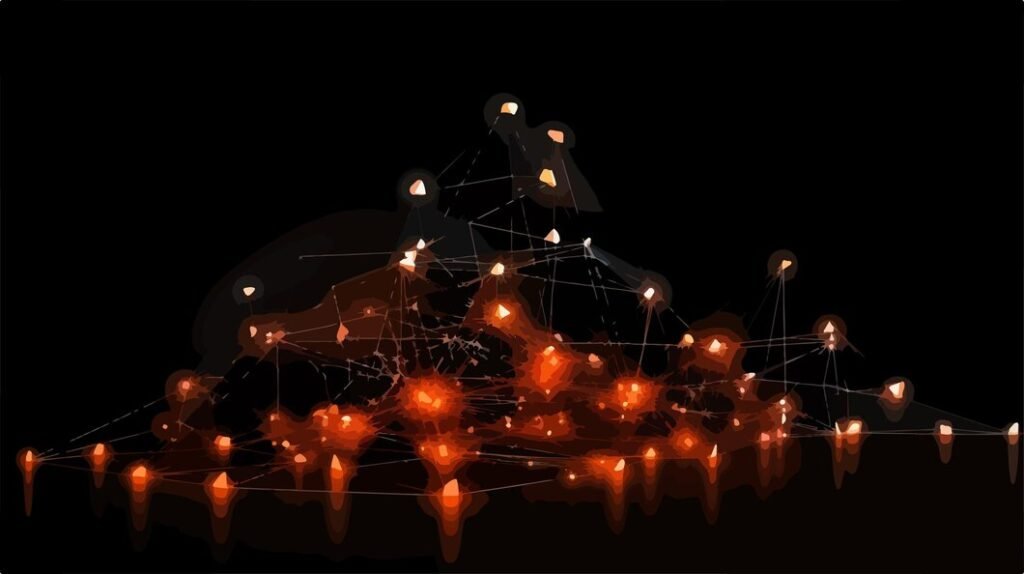Tech
ConvKB Torch: Revolutionizing Knowledge Graph Embedding

Knowledge graphs play a pivotal role in modern AI applications, offering a structured way to represent knowledge as triples consisting of a head entity, a relation, and a tail entity. As these graphs grow in complexity, researchers have developed various embedding models to capture their semantic intricacies. ConvKB is one such advanced method that leverages convolutional neural networks (CNNs) for knowledge graph embedding. This article dives deep into ConvKB’s architecture, its implementation in PyTorch, and its transformative potential in the realm of AI.
Understanding ConvKB and Its Importance
ConvKB is a CNN-based knowledge graph embedding model. Unlike traditional embedding models that focus on the direct interaction between head, relation, and tail embeddings, ConvKB applies a 1D convolutional layer across their concatenated embeddings. This approach captures intricate latent features that might be overlooked in simpler models, enabling ConvKB to learn richer representations.
The importance of ConvKB lies in its ability to generalize across different types of triples. Whether the relationships are hierarchical, compositional, or even symmetric, ConvKB can identify patterns that improve downstream tasks such as link prediction, entity classification, and semantic reasoning.
The Architecture of ConvKB
The ConvKB architecture consists of a few critical components, each playing a unique role in the embedding process.
- Embedding Layer:
The first layer of ConvKB maps entities and relations into dense vector representations. These embeddings are learnable parameters that encode semantic information about the graph components. - Concatenation Layer:
Once the embeddings for the head, relation, and tail are retrieved, they are concatenated into a single vector. This stacked representation serves as input to the convolutional layer. - 1D Convolutional Layer:
The core of ConvKB is its 1D convolutional layer. By sliding a kernel over the concatenated embeddings, this layer extracts patterns and interactions between the embeddings. The kernel’s size and number of filters determine how fine-grained these patterns are. - Fully Connected Layer:
The final layer projects the features learned by the convolutional layer into a score that represents the validity of a given triple. Higher scores indicate more plausible triples.
Why Use ConvKB Over Traditional Models?
ConvKB introduces several advantages over traditional embedding models:
- Pattern Discovery: The convolutional layer enables ConvKB to uncover complex patterns that simple additive or multiplicative interactions in earlier models might miss.
- Flexibility Across Relations: ConvKB adapts seamlessly to different types of relationships, whether they are one-to-one, one-to-many, or many-to-many.
- Enhanced Generalization: By focusing on latent features, ConvKB generalizes better to unseen triples, making it ideal for real-world applications where knowledge graphs are incomplete.
Implementing ConvKB in PyTorch
Now, let’s dive into the implementation of ConvKB in PyTorch. Below is a step-by-step guide:
Import Required Libraries
python
Copy code
import torch
import torch.nn as nn
import torch.nn.functional as F
Define the ConvKB Model
python
Copy code
class ConvKB(nn.Module):
def __init__(self, entity_dim, relation_dim, num_filters, kernel_size=1):
super(ConvKB, self).__init__()
self.entity_dim = entity_dim
self.relation_dim = relation_dim
self.embedding_dim = entity_dim + relation_dim
self.num_filters = num_filters
# 1D Convolutional Layer
self.conv1d = nn.Conv1d(
in_channels=1,
out_channels=num_filters,
kernel_size=kernel_size,
stride=1
)
# Fully Connected Layer
self.fc = nn.Linear(num_filters * self.embedding_dim, 1)
def forward(self, head_emb, rel_emb, tail_emb):
# Concatenate embeddings
concatenated = torch.cat([head_emb, rel_emb, tail_emb], dim=1).unsqueeze(1)
# Apply convolution
conv_output = self.conv1d(concatenated)
conv_output = F.relu(conv_output)
# Flatten and apply fully connected layer
flatten = conv_output.view(conv_output.size(0), -1)
score = self.fc(flatten)
return score
Training ConvKB for Knowledge Graph Embedding
To train the ConvKB model, you need a dataset comprising triples and their corresponding labels (valid or invalid). The training loop typically includes the following steps:
- Dataset Preparation: Load your knowledge graph data and split it into training, validation, and test sets. Preprocess the entities and relations to assign them unique IDs.
- Embedding Initialization: Initialize embeddings for entities and relations. These embeddings can either be random or pre-trained using a simpler model.
- Loss Function and Optimizer: Use a loss function such as binary cross-entropy to evaluate the model’s predictions. An optimizer like Adam or SGD helps minimize the loss during training.
- Training Loop: In each epoch, sample a batch of triples, compute the scores using ConvKB, calculate the loss, and update the model’s weights.
Challenges in Implementing ConvKB
While ConvKB offers significant advantages, it also poses some challenges:
- Computational Complexity: The convolutional layer, while powerful, can increase computational costs, especially for large graphs with millions of entities and relations.
- Hyperparameter Tuning: Selecting the right kernel size, number of filters, and embedding dimensions requires experimentation, which can be time-consuming.
- Scalability: Adapting ConvKB to extremely large knowledge graphs may require additional techniques like negative sampling or graph partitioning.
Applications of ConvKB
ConvKB’s ability to learn rich embeddings makes it a valuable tool for various AI applications:
- Link Prediction: ConvKB can predict missing links in a knowledge graph by evaluating the plausibility of new triples.
- Entity Classification: By clustering similar entities in the embedding space, ConvKB facilitates classification tasks.
- Question Answering: ConvKB embeddings enhance the accuracy of question-answering systems that rely on knowledge graphs.
- Recommender Systems: Knowledge graph embeddings generated by ConvKB can improve the quality of recommendations in domains like e-commerce and entertainment.
Future Directions for ConvKB

ConvKB is a promising model, but future research can enhance its capabilities further:
- Multi-hop Reasoning: Integrating multi-hop reasoning capabilities could enable ConvKB to infer relationships across distant nodes in a graph.
- Dynamic Graphs: Extending ConvKB to handle dynamic graphs that evolve over time would broaden its applicability.
- Hybrid Models: Combining ConvKB with other neural architectures, such as transformers, could improve its ability to capture long-range dependencies.
Conclusion
ConvKB stands out as a powerful tool for knowledge graph embedding, leveraging convolutional neural networks to extract meaningful patterns from triples. Its implementation in PyTorch is straightforward yet flexible, allowing researchers to adapt it to various applications. Despite its challenges, ConvKB’s potential to transform knowledge representation makes it a valuable addition to the AI toolkit. By addressing its limitations and exploring future enhancements, ConvKB could pave the way for even more advanced models in the years to come.
-

 Tech1 year ago
Tech1 year agoHow to Use a Temporary Number for WhatsApp
-

 Business2 years ago
Business2 years agoSepatuindonesia.com | Best Online Store in Indonesia
-

 Social Media1 year ago
Social Media1 year agoThe Best Methods to Download TikTok Videos Using SnapTik
-

 Technology1 year ago
Technology1 year agoTop High Paying Affiliate Programs
-

 Tech10 months ago
Tech10 months agoUnderstanding thejavasea.me Leaks Aio-TLP: A Comprehensive Guide
-

 FOOD12 months ago
FOOD12 months agoHow to Identify Pure Desi Ghee? Ultimate Guidelines for Purchasing Authentic Ghee Online
-

 Instagram3 years ago
Instagram3 years agoFree Instagram Auto Follower Without Login
-

 Instagram3 years ago
Instagram3 years agoFree Instagram Follower Without Login




















